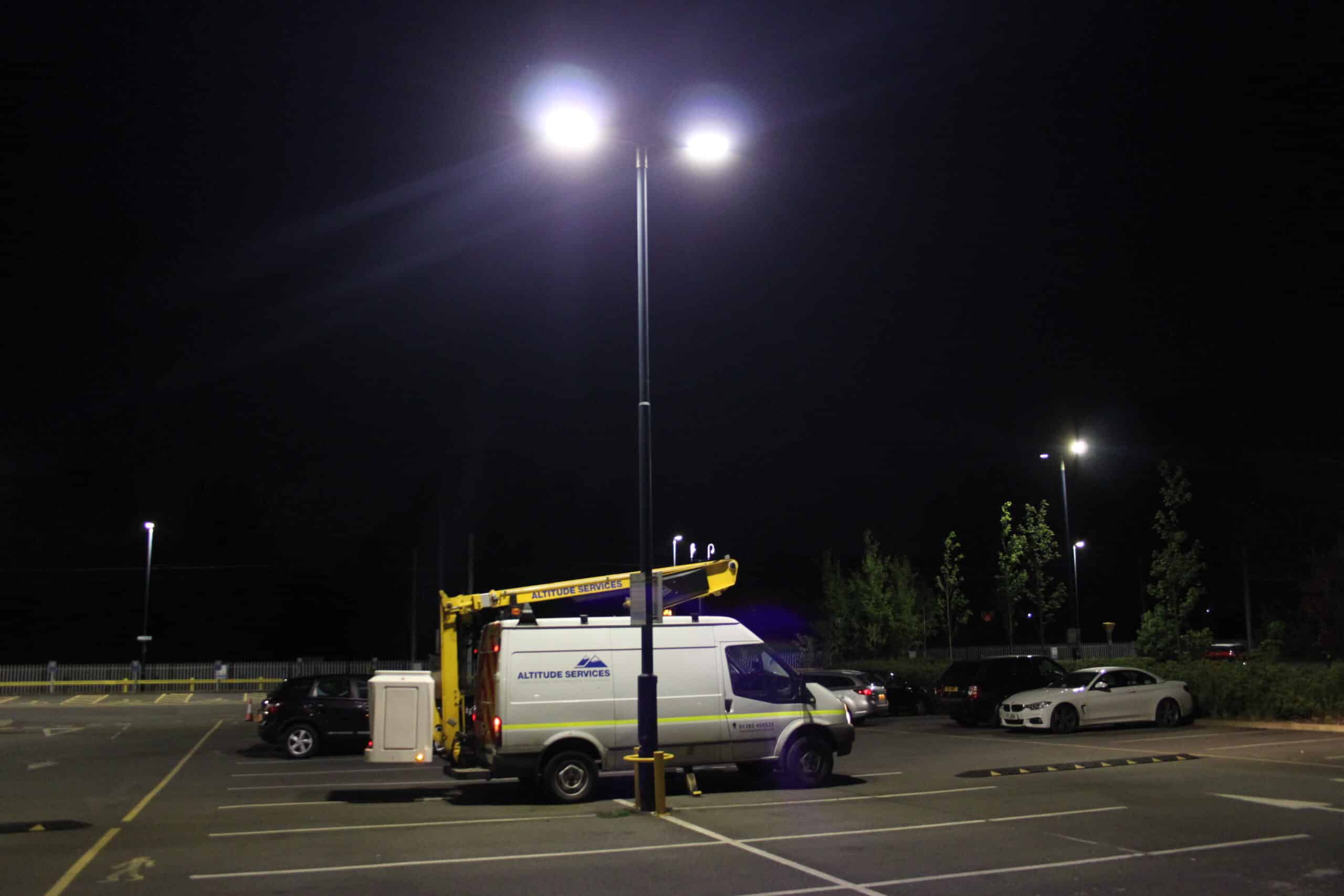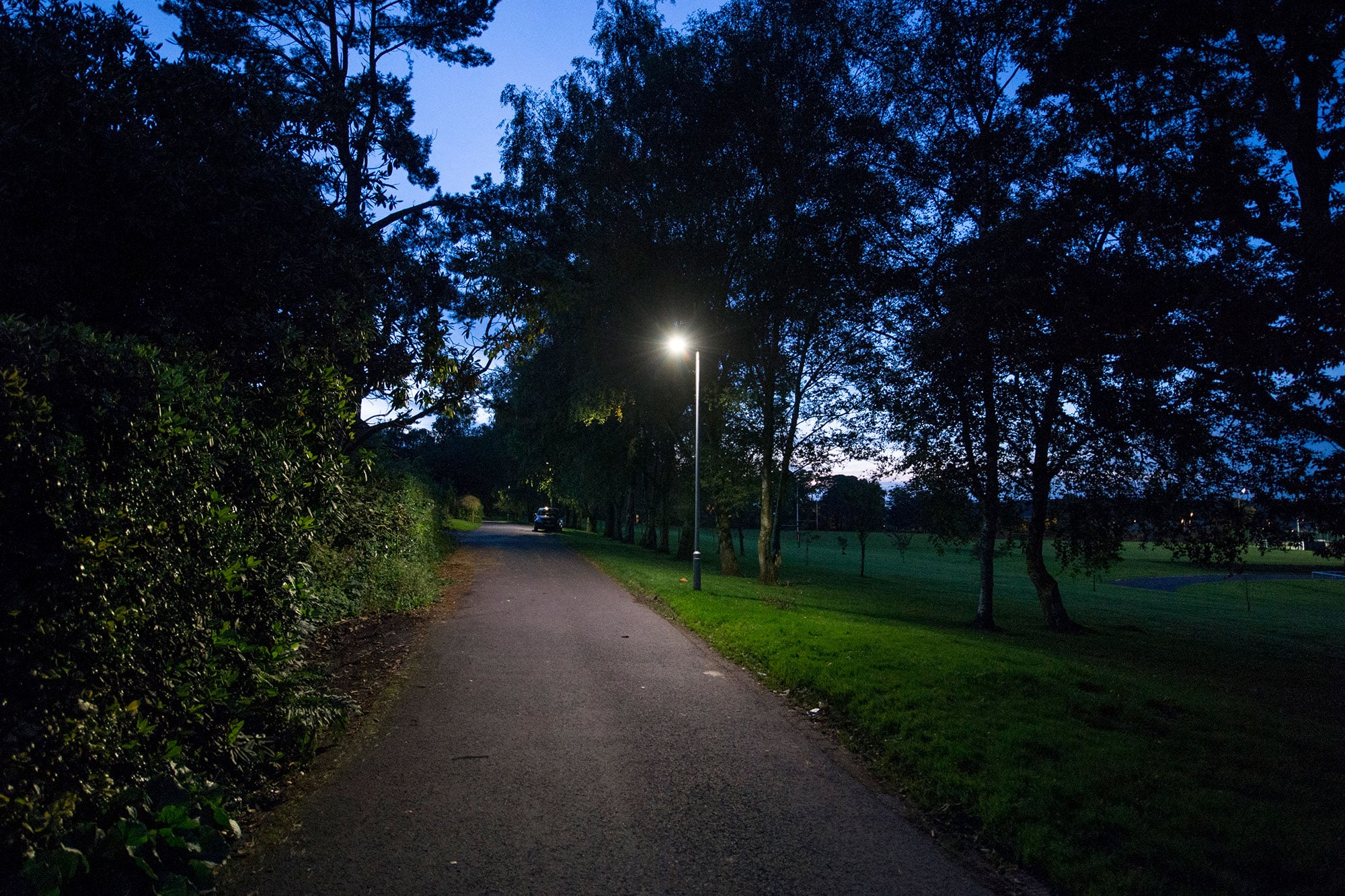We all need light, whether for business, industry or home use. Lighting is all around us, and it is a major source of energy consumption. It accounts for around 20% of the UK’s electricity. Furthermore, the cost of lighting usage and maintenance extends beyond interiors and has implications for outdoor lighting.
One key way of improving overall energy performance, while providing exceptional savings on efficiency and maintenance is with external LED lighting.
Improved Lighting Efficiency
LED stands for light emitting diode, and the development of this technology stretches back over 60 years. It is only in the past 10 years, however, that their use has spread, so that LEDs are rapidly becoming the light source of choice.
With the cost of LEDs coming down as their technology improves, they are now very much a mainstream lighting solution, overtaking commercial legacy lighting sales.
LEDs have an extremely long lamp life, when compared to legacy lighting such as sodium, tungsten or halogen lamps, typically between 25,000 and 75,000 hours.
Because LEDs use less power, overall kW/hr consumption per year is less, helping to reduce overall CO2 emissions.
Meeting the need to reduce carbon emissions provides the opportunity to make lighting more efficient.
The efficiencies from installing LEDs can provide savings of up to 80%, according to the Carbon Trust.
Planning for External LED Lighting
While spring ushers in longer evenings, external lighting should still be a major strategic concern when it comes to energy saving and efficiency.
For regions across the UK, upgrading street lighting to LEDs is a means of providing energy and money savings fast.
In one London Borough, the recent plan to upgrade over 11,000 street lights to LED is estimated to produce savings of around £400,000 per year.
Not only this, but the adaptability of LED lighting systems means that the local council can implement heritage-style lanterns, which, aesthetically will preserve the historical look of the area.
External LED lighting also provides superior controllability. Lighting controls are essential for ensuring efficiency, reducing emissions and managing the use of light.
This means there can be automatically controlled dimming on outdoor spaces and roads at certain times, providing more light only when it is required. At the same time, the lower energy consumption of LEDs means they can be left on for longer, thereby helping to tackle issues such as crime and road safety.
Upgrade, Maintenance and ROI
While upgrading external LED lighting does require an initial investment and commitment, it can also mean the highest energy savings, and can pay for itself rapidly because of this.
Moreover, the right kind of advanced funding, can mean that users start a return on investment from LED lighting before they even begin paying for it.
LED lights are a low maintenance option. For traditional, legacy lighting systems, maintenance costs can eat away at energy budgets. However, the longer lifespan of LEDs means a reduction in maintenance cycles, adding another saving alongside energy consumption.
Towards an Energy Efficient Future
What would it mean for energy saving if all the UK’s streetlights were LEDs? According to the independent Lux guide to lighting, with an estimated 5.5 million streetlights, a full upgrade to LED technology would save 770,000,000 kilowatt hours per year, and prevent emissions of some 430,000 tonnes of carbon dioxide.
Currently, street lighting is around 4% of the UK’s lighting electricity bill. However, only one in five street lamps is LED. The Energy Saving Trust states that the saving per streetlight is 35%. A full roll-out of LEDs across the UK could mean cost savings of around £77 million.
Do you want to be part of this change? Contact Altitude Services today to find out how we can help you save on energy with efficient, external LED lighting.
Case Study: Keele University LED Upgrade
Altitude are long term lighting partners of Keele University, having maintained their external campus lighting since 2014. In early 2017 we were approached by the Estates and Development Directorate who, as part of a campus wide initiative to reduce energy consumption, asked us to make some proposals for upgrading the existing lighting. Having previously relied on sodium-based SON lanterns, the University was looking to upgrade to LED lighting columns in a drive to significantly reduce energy consumption, as well as improve lighting levels for student safety.
Read more … http://www.altitudeservices.co.uk/case-studies/keele-university-led-upgrade/
Enjoying our articles? Get them straight to your inbox. All you need to do is sign up to our newsletter here: Sign me up!


